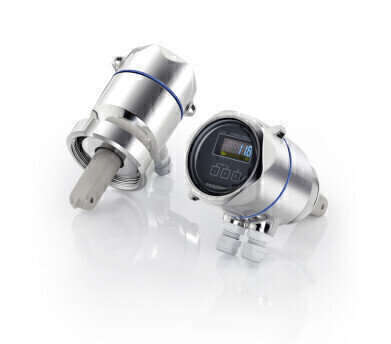Environmental Laboratory
Total Conductivity Transmitter Released
Jan 05 2015
Endress+Hauser (USA) introduces the Smartec CLD18 toroidal conductivity transmitter for hygienic applications. It has a food-safe PEEK (polyetheretherketone) toroidal sensor, potted electronics and a NEMA TYPE 6P/IP 69K stainless steel or plastic housing to withstand clean-in-place (CIP) operations.
The PEEK sensor has excellent chemical, mechanical and thermal resistance properties and is entirely seamless and gap-free, and is therefore safe to use in hygienic applications in the food, beverage and life sciences industries. The sensor meets 3A standards, and all wetted materials are FDA-listed. The sensor is designed in accordance with the current guidelines of ASME BPE and meets the requirements of EC Regulation1935/2004 for articles intended to come into contact with food.
The CLD18 uses an inductive conductivity measurement technique, where an oscillator produces an alternating magnetic field in the primary coil. This induces current flow in the fluid. The strength of the current depends on the conductivity, which corresponds to the concentration of ions in the fluid. The current is measured by the receiver and is used to determine the conductivity, which is calculated and sent as a 0-20 or 4-20mA signal. The sensor also outputs temperature as a 0-20 or 4-20mA signal.
The sensor measures conductivity from 200 μS/cm to 1,000 mS/cm. A binary input allows range switching for flexibility in CIP systems. Measurement range switching allows a user to set up two different analog output scales. For example, when monitoring one fluid the user may want the conductivity analog output to be scaled from 200 μS /cm to 100 ms/cm, and then later change it to 100ms to 1000ms/cm because the fluid being measured is of higher conductivity.
An alarm output activates if the measured temperature or conductivity exceeds the current output limits or if an error condition occurs. For example, if the conductivity output were scaled for 200 μS/cm to 100 ms/cm but the device measures a value of 200 ms/cm, the alarm contact would close.
Advantages of this type of inductive conductivity measurement include no electrodes and therefore no polarisation effects; complete galvanic isolation of the measurement from the fluid; and accurate measurement in media with a high degree of pollution and the tendency to form build up. Accuracy is ±2% of the measured value with repeatability of 0.5%.
Typical applications include monitoring phase separation of product/water mixtures in the beverage Industry, CIP systems, liquid concentration, separation in a cleaning return line, industrial water, rinsing processes in pickling plants, and product interface detection in beverage filling supply lines.
The sensor is suitable for continuous operating temperatures up to 230 °F and can be operated up to 266 °F for 60 minutes for sterilisation phases. Its pressure resistance rating is 174 psi up to 122 °F.
A platinum RTD Pt 1000 temperature sensor is integrated in the sensor. This ensures efficient phase separation at different and quickly changing process temperatures. The temperature sensor is embedded in the PEEK body. Linear temperature compensation with user-configurable temperature coefficients is provided.
Digital Edition
IET 34.2 March 2024
March 2024
Gas Detection - Biogas batch fermentation system for laboratory use with automatic gas analysis in real time Water/Wastewater - Upcycling sensors for sustainable nature management - Prist...
View all digital editions
Events
Apr 18 2024 Shanghai, China
Apr 22 2024 Hannover, Germany
Apr 22 2024 Marrakech, Morroco
Apr 23 2024 Kuala Lumpur, Malaysia
Apr 23 2024 Kintex, South Korea


















